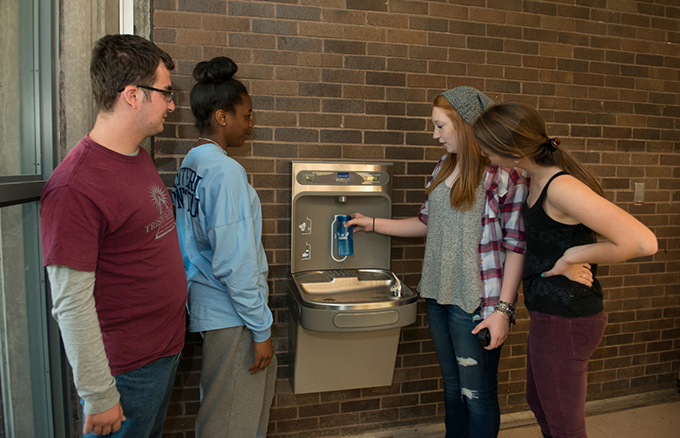For the second year in a row, Sierra Magazine has included Southern on its list of “Cool Schools” — American’s greenest universities. Ranked at 125 for 2015, Southern jumped this year from its prior position at 152. The “Cool Schools” article with rankings is published in the magazine’s September/October 2015 issue. The full list of rankings can be found here.
Participation in Sierra Magazine’s “Cool Schools” ranking is a voluntary opt-in process that is open to all four-year undergraduate colleges and universities in the United States. This year, campus administrators could participate by completing an extensive questionnaire about their school’s sustainability practices. Staff from Southern’s Office of Sustainability completed the questionnaire. The magazine’s goals for publishing the ranking are that it will serve as a guide for prospective students who want to compare colleges based on the schools’ commitment to environmentalism and that the ranking might spur productive competition between colleges, raise eco-standards on campus, and publicly reward the institutions that work hard to protect the planet.
The “Cool Schools” ranking is an index that provides fair, comparative information about the most important elements of campus sustainability. Sierra’s researchers determine the numbers and order when they evaluate schools’ survey responses via a scoring key developed to emphasize the Sierra Club’s environmental priorities.
The university was also recently named to “The Princeton Review’s Guide to 353 Green Colleges” for 2015.The Princeton Review — an education services company known for its test prep programs and college rankings, ratings, and guidebooks — profiles Southern in the sixth annual edition of its free downloadable book, “The Princeton Review’s Guide to 353 Green Colleges.”
The Princeton Review chose the schools for this edition of its “green guide” based on data from the company’s 2014 survey of hundreds of four-year colleges concerning the schools’ commitments to the environment and sustainability.
The profiles in “The Princeton Review’s Guide to 353 Green Colleges” provide information about each school’s admission requirements, cost and financial aid, and student body stats. They also include “Green Facts” about the schools with details on the availability of transportation alternatives at the schools and the percentage of the school food budgets spent on local/organic food.
Published April 16, a few days before the April 22, 2015, celebration of Earth Day, the free, 218-page guide can be downloaded here.
The Princeton Review created its guide to green colleges in partnership with the Center for Green Schools at the U.S. Green Building Council (USGBC).
The university’s new Academic and Laboratory Science Building, slated to open in fall 2015, incorporates many elements of green building practices and will be home to Earth Science, Environmental Science, and The Center for Coastal Marine Studies, among other environmentally-oriented academic programs.


